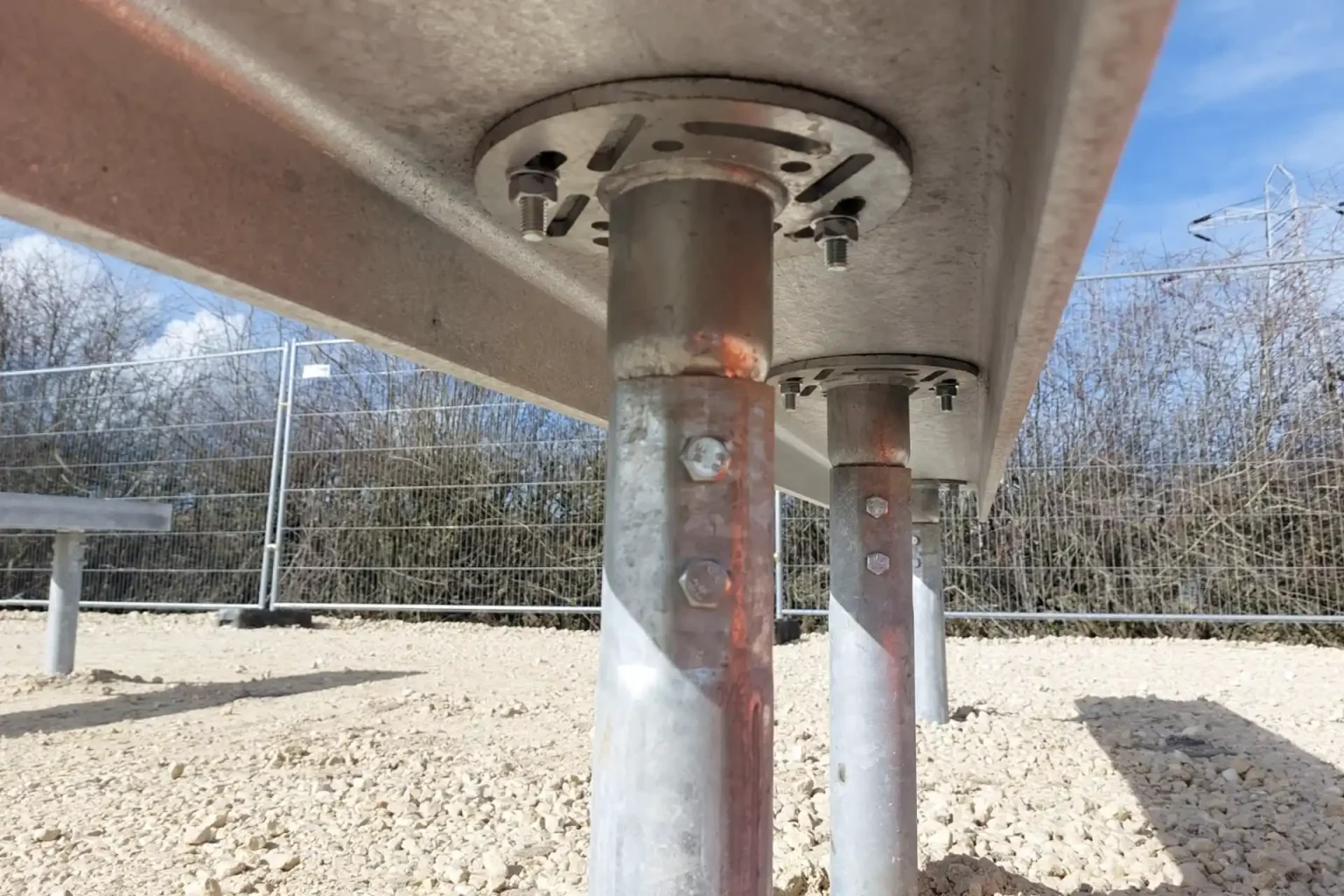
Screw Piles vs. Concrete
Between RADIX Screw Piles and concrete, the choice is simple.
Previously, concrete stood as the sole solution in the market for foundation work. Today, concrete dominance is being challenged by innovative foundation solutions like RADIX’s screw pile foundations, which outperform concrete in every aspect.
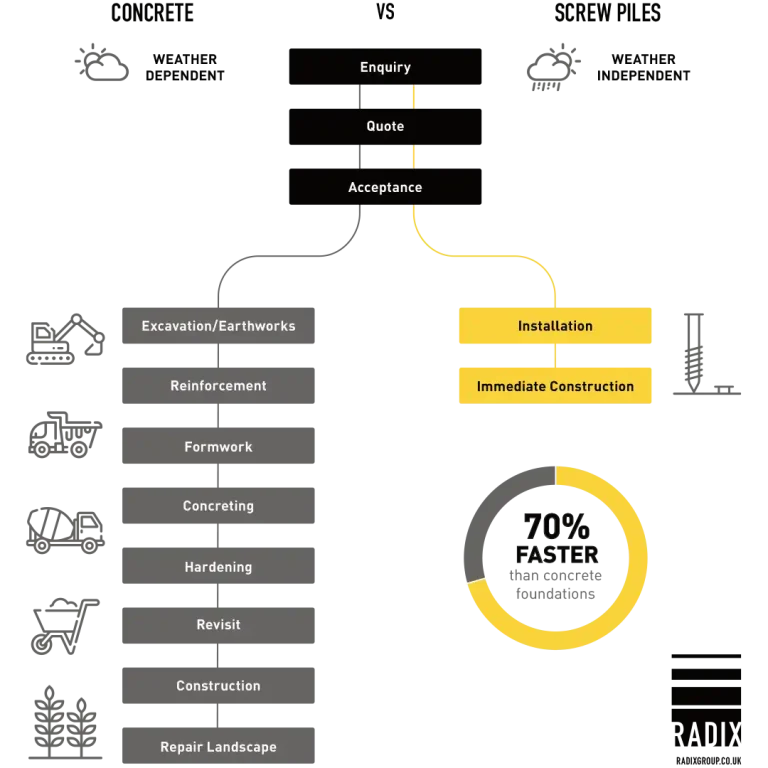
Screw Piles vs. Concrete: The Simplicity of Installation
Bid farewell to the cumbersome use of heavy machinery, disruptive excavation processes, and prolonged construction timelines. Our approach not only minimises environmental impact but also leverages the expertise of our certified installers.
Utilising compact, all-terrain equipment, we ensure each screw pile is anchored with unmatched precision.
Contrastingly, concrete installation is a multi-step endeavour. It demands substantial equipment and considerable manpower, stretching from the initial excavation to the final curing phase of concrete.
A significant advantage of screw piling over concrete is their ability to reach the most stable ground level, a feat unachievable with concrete foundations.
Installations for Commercial Projects
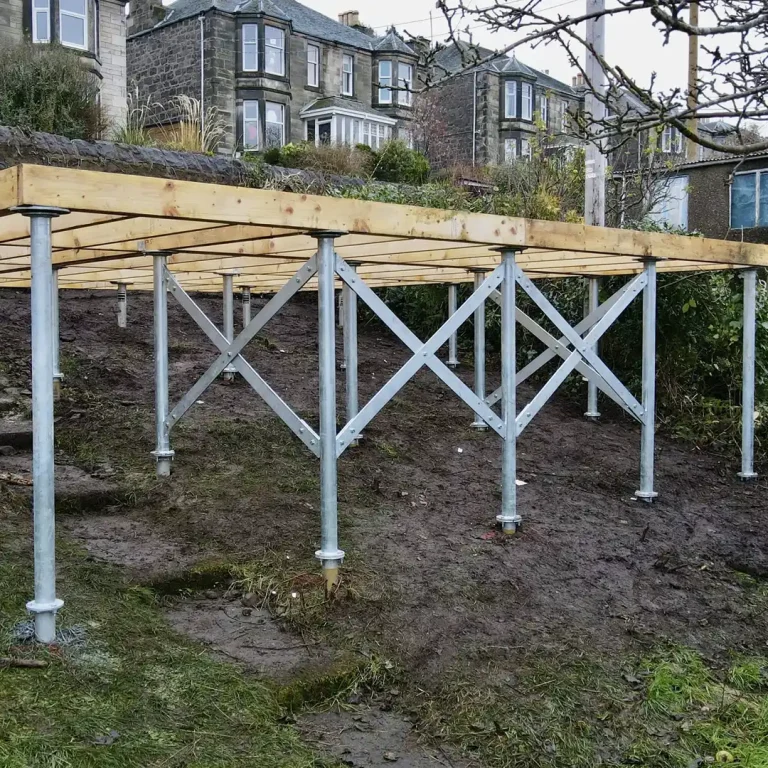
Screw Piles vs Concrete: Economical Over the Long Term
While a helical pile may initially appear more costly than a standard concrete mix, a holistic view of installation factors reveals screw piles as a more cost-effective choice.
RADIX Screw Piles not only minimise landscape disruption but also offer significant savings in time and resources throughout your project.
Consider this: installing our screw piles typically requires just one to two people and a single day, depending on the project, compared to the extensive manpower, heavy machinery, and long hours it takes with concrete foundations
Furthermore, concrete foundations are more susceptible to damage from freeze/thaw cycles, and can often lead to cracks, deterioration, or even worse, collapse within a few years.
Additionally, removing a concrete foundation is far more labor-intensive and expensive compared to extracting a screw pile.
In essence, choosing a screw pile foundation system yields lower overall costs compared to a concrete foundation.
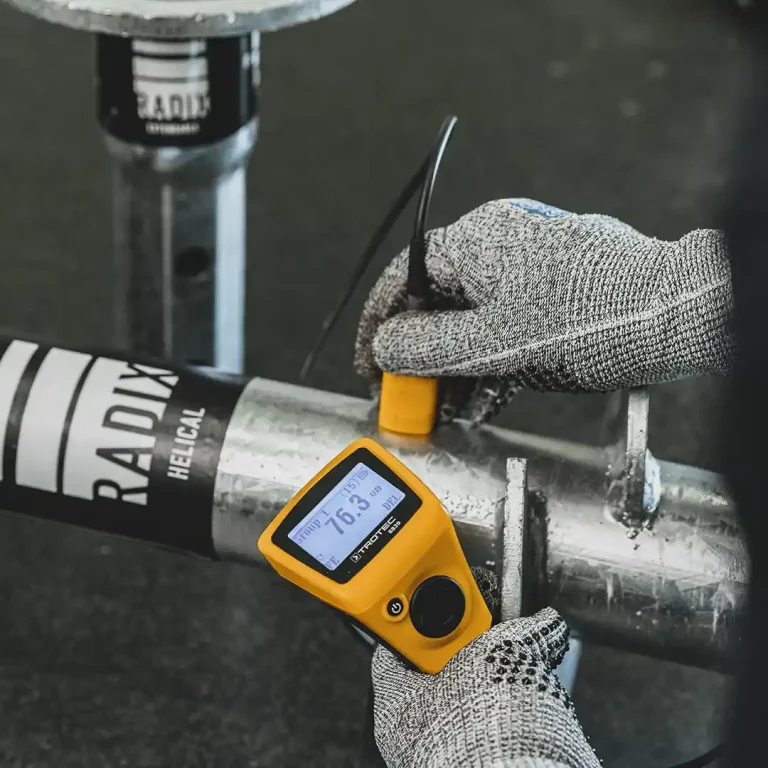
Screw Piles vs. Concrete: Prioritising Quality
From the initial analysis, design, planning, testing, and quotation to the final installation, our dedicated team is committed to delivering a job of the highest quality, devoid of failures or compromises.
RADIX’s screw piles are highly engineered to easily surpass concrete in precision and efficiency. They guarantee an impeccably level foundation, a feat less attainable with concrete.
Our range of screw piles and our vast selection of accessories are meticulously designed to support various projects, terrains, and climatic conditions. Whatever your project is, please contact us, and rest assured that you will be in very capable hands with our team, their equipment, and our screw pile foundations.
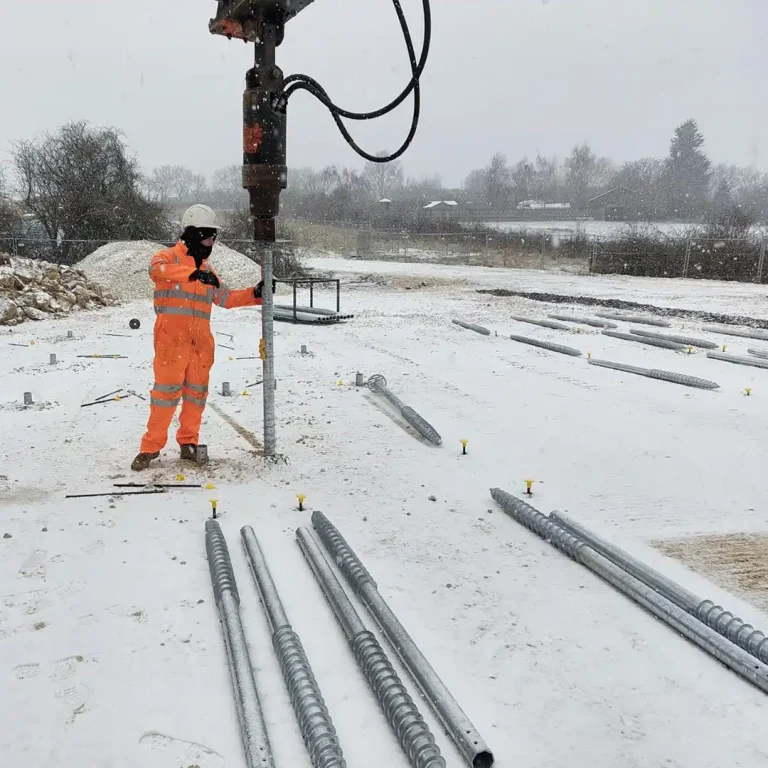
Screw Piles vs. Concrete: Enduring Through Time
Installing concrete foundations in cold, wet, and harsh climates is difficult if not impossible at times.
At RADIX, we’ve developed screw piles that surpass these limitations. Through a high-quality galvanisation process, our screw piles are exceptionally resistant to corrosion. The design of our screw piles ensures they provide significant load-bearing capacities for many years.
Screw piling with us has taken the installation of foundations to a higher level of quality, precision, and stability.
Moreover, our screw pile heads are equipped with a versatile flange system. Our anchor design allows the structure to be directly attached from above, preventing any lateral or vertical movement.
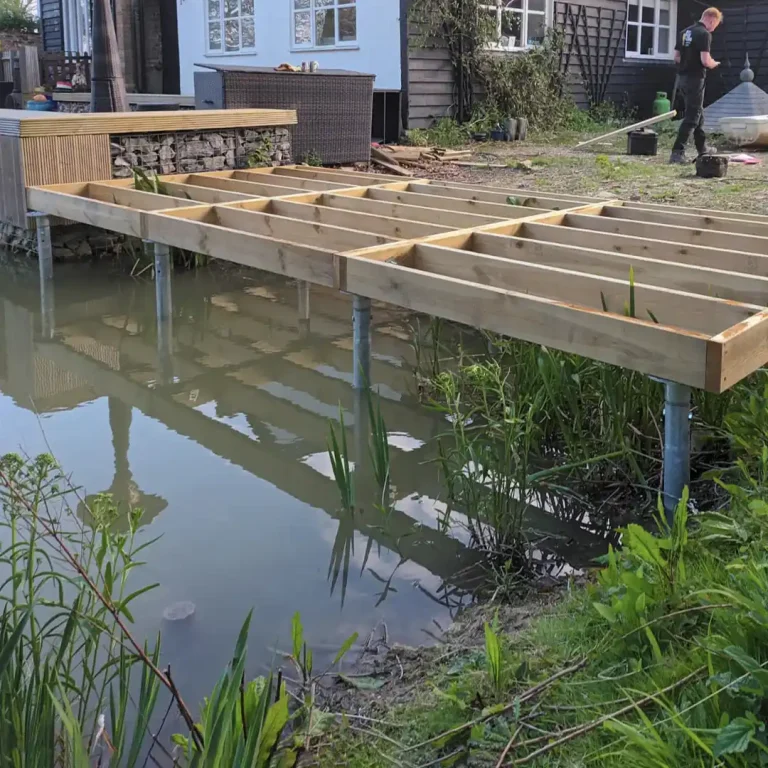
Environmental and sustainability benefits of using Screw Piles compared to Concrete
At RADIX, we are committed to delivering innovative, sustainable solutions that help private clients and commercial projects. When it comes to choosing between screw piles and concrete, the environmental and sustainability benefits are clear.
Cement is one of the leading contributors to carbon emissions worldwide, and the use of concrete in construction needs to be reduced, so the more people adapt to solutions like our screw piles, the better.
- Reduced carbon footprint: Screw piles require less concrete, resulting in lower greenhouse gas emissions and decreased carbon footprint during manufacturing and transportation.
- Minimal site disturbance: Screw piles require no excavation or disruptive machinery, reducing the amount of soil disturbance and preserving the natural landscape.
- Water conservation: Unlike concrete, screw piles do not require water for curing, reducing your water consumption during construction.
- Reusable and recyclable: Screw piles are removable and reusable, minimizing waste and allowing for future repurposing or relocation. Additionally, they are made from recyclable steel and hold less embedded carbon
- Energy-efficient installation: Screw piles can be installed quickly and accurately, saving time and energy compared to the labor-intensive process of pouring and curing concrete.
- Resilience to climate change: Screw piles are designed to withstand freeze/thaw cycles and shifting soil conditions, ensuring long-term stability and reducing the need for future repairs or replacements.
- Sustainable foundations: RADIX screw piles offer a low-carbon, low-impact alternative to traditional concrete foundations. By choosing screw piles, you can minimise your environmental footprint and help towards your net-zero targets. We specialise in foundations for renewable energy projects, like BESS, solar farms, and more.
Contact us with your project details to review and ask us any questions you may have.